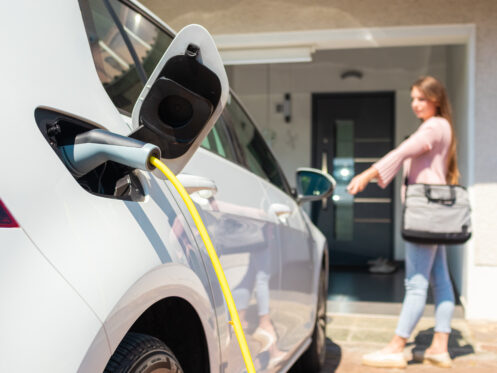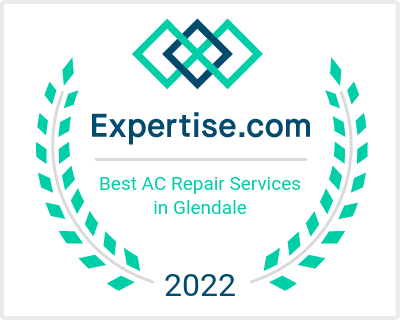Americans are making the transition to electric vehicles (EVs) faster than the industry expected. It’s an exciting time but also a bit daunting for many people considering the switch. There’s the prospect of installing an EV charging station and learning how to use it. Let’s explore what everyone new to charging EVs at home should know.
EV Charging: Level 1, Level 2, and Level 3
In the EV charging space, level refers to the output of the charger. Level 1 indicates a 120-volt connection, and Level 2 indicates a 240-volt connection. You may see these referred to as 110 and 220 volts, respectively, which refers to an older standard in the U.S. Level 3 indicates DC fast charging, which is not suitable for home use and is only available at public charging stations.
Although Level 1 charging stations are available, most homeowners investing in a home charging station will opt for Level 2. A Level 2 charger is faster and can still handle EVs that max out at Level 1. Plus, any savings to be had from choosing a Level 1 charger generally aren’t worth it.
Kilowatts: Charging Power
Kilowatts (kW) is an important concept when it comes to charging EVs. It indicates the rate of charge that the charging station provides. It also indicates the capability of the vehicle’s electrical system. If you have a vehicle with a maximum charge rate of 10 kW, it doesn’t matter if you connect it to a 15-kW charger. The 10-kW rate is the fastest it’ll ever be able to charge.
A Level 1 charger provides 1 kW. A Level 2 charger provides between 7 and 19 kW. While you don’t need more kW than your current vehicle supports, you may want it for future-proofing. You don’t need to worry about amps. Amperage and kW go hand in hand. Get the kW right, and the amps will be right as well.
Do You Need an Electrical Panel Upgrade?
You may need an electrical panel upgrade if you live in an older home. A home charging station will typically require a 240-volt electrical panel. If you have a 120-volt panel, you likely will need an upgrade, which can increase your charging station installation costs considerably.
Are There Alternatives to an Electrical Panel Upgrade?
If you can’t fit an electrical panel upgrade into your budget right now, there are cheaper alternatives. One option is to pair the charger with a power meter. The power meter will throttle the electrical usage to a level that doesn’t trip the circuit breaker. Power meters are relatively inexpensive. This lets you get the charging station you need now. You can then save up for the new electrical panel and upgrade down the line.
Plug Type
In North America, almost every EV on the market has the SAE J17772 plug, or J-plug. The exception is Tesla, which uses the proprietary Tesla plug. General Motors has announced plans to switch to the Tesla plug starting in 2025. There are adapters available for both scenarios. That means that you can choose whichever charger is best for you now and purchase an adapter later if needed.
What Is NEMA?
NEMA, or National Electric Manufacturers Association, refers to the plug type of the 240-volt outlet. Many homes already have a NEMA 14-30 plug for a clothes dryer. It’s possible to use a NEMA 14-30 plug if you already have one. Still, you may want to consider upgrading to a NEMA 14-50. It will support up to 50 amps.
Hard Wiring vs. 240-volt Plug
Hardwiring your charger allows for charging up to 80 amps rather than 50. Experts assert that it’s the better option if you intend to live in the same home for many years.
The benefit of a plug is that you can take the charging station with you if you move without the help of an electrician. A plug may also be preferable if you opt for a portable charging station that you can take with you on the road.
What Is Nuisance Tripping?
Another benefit of hard wiring is that you avoid nuisance tripping. This is a trip that occurs when you have multiple ground-fault circuit-interrupting (GFCI) breakers on the same line. If you do need the plug setup, experts recommend opting for a commercial plug. It may cost $100 rather than $10, but it’s worth it as it will avoid this problem.
Cable Length and Management
Experts recommend opting for a 20- to 25-foot charging cable. Many charging stations come with a cable as short as 12 feet, which can be inconvenient. Longer cables are available, but don’t purchase more than you need. That can be inconvenient as well. You may also want to consider a unit with a retractable cable, as that makes cable management much easier. Dual charging stations are also an option for households that have two or more EVs.
Charging Times
There are a number of factors that determine charging time. The charge rate of the vehicle is a limiting factor. The charge rate of the charger may be a limiting factor as well if it’s less than that of the vehicle. The capacity of the battery is a factor too. A larger battery takes longer to charge. The average EV will take 40 to 50 hours to charge from 0% to 100% with a Level 1 connection. The average EV will take four to 10 hours to charge from 0% to 100% with a Level 2 connection.
Can You Top Off an EV?
Yes. In fact, it’s the recommended approach. It has no negative effect on the battery and ensures that you always have a full charge.
Can You Charge an EV Overnight?
Yes. If you have a low charge, charging the vehicle while you sleep can be convenient. Often, this question stems from concerns over whether you should leave a charging vehicle unattended. It is safe to do so. Experts recommend supervising for two minutes to ensure that there isn’t a fault. If the vehicle is charging correctly at that point, it’s perfectly fine to leave it.
Your Local EV Charging Pros in the Phoenix Metro Area
Christian Brothers Air Conditioning Plumbing Electrical is a residential electrical contractor that’s served Phoenix and the surrounding areas since 1976. Our electricians perform all manner of electrical repairs and upgrade electrical panels. We also install new wiring, EV charging stations, surge protection, outlets, switches, outdoor and indoor lighting, and ceiling fans.
We have plumbers that pipe and repipe gas, water, and sewer lines. Our plumbers install and repair fixtures, drains, tank and tankless water heaters, water filters, water softeners, and leak detection as well. We also have HVAC technicians who install and repair all types of ductless and ducted heating and cooling equipment. Our technicians also specialize in ventilation fans, air purifiers, UV air sanitizers, dehumidifiers, and humidifiers. Call us today or contact us online to set up an appointment or with any questions about these products and services.










